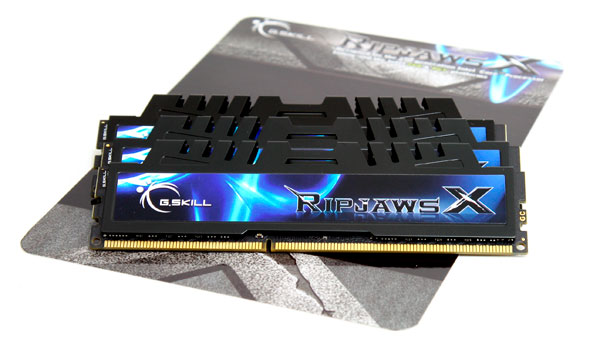Final Words & Conclusion
Final Words & Conclusion
Dual-channel performance with the second generation Sandy Bridge processors just rocks, actually it rocks extremely hard. One can only imaging what is going to happen with the upcoming Ivy bridge processor supporting ever faster memory.
But yeah dual-channel on a Series 6 Intel chipset motherboard in combo with a nice Sandy Bridge based processor including 2500/2600 series, well just hauls massive as.

The DIMMs we tested today are _very_ high-density 8GB DIMM modules. Yep, 8GB punched onto one DIMM. And as such it is impressive to see that this kit can easily run a 2133MHz frequency and does so with respectable latency timings.
Obviously the kit tested today is targeted at the latest series 6 Intel motherboard solutions that allow 1600+ MHz on that memory, and that's where this 32 GB kit really is golden.
Overclocking wise we fooled around with it a little and you will be limited alright. Then again at default you can already run 2133 MHz. But tweaking the memory ratio to the 2400MHz step resulted in a non posting motherboard. Long story short, we reached 2245Mhz at C9 with a maximum in baseclock changes. But at that point we needed 1.7 Volts on the memory already.
In modern day PCs with a dual-channel configuration 4 Gigabyte of memory is the new norm. But just look back say three of years, 1 GB was then the norm. Our PCs have an excruciating thirst for memory and at the prices offered in today's hardware climate, my advice is simple; chuck and load that PC full with memory.
Now I agree, 32Gb might be a little excessive. but this kit is available in 8 and 16GB versions as well. And for the money they certainly kick ass and are soooo easy to setup.
32GB versus 16GB - At 32Gb there's more overhead on the memory controllers and as a result the 16GB setup (same memory same timings) was a tiny bit faster here and there. I'm just saying that the 16GB kit as such might be a nice kit IF you are looking for memory kits in these volume sizes of course.
Memory remains a wise investment to make, at relatively little cost. The folks that benefit from more memory right way are the ones focused at content creation, transcoding and overall work with software like Adobe Premiere and Photoshop, it there where 8GB+ already really is recommended.
And that will be the conclusion, 32 GB is not at all yet needed and very hard to justify, but might come recommended if you have a LOT of content creation to do on your PC.
We find the G.Skill Sniper 4x8GB CL7 2133MHz kit really impressive and hey, it's relatively affordable if you look at prices per GB.
The 32GB 2133MHz CAS9 kit sells for 375 and that is a lot of money. It's 11.72 EUR per GB. Two years ago you paid 30 EUR per GB for regular 1333 MHz folks. Now for just under 12 EUR you get 2133 MHz C9 memory.
At these prices you just can't go wrong really and with XMP support you just pop them in a good brand motherboard like P67 or Z68 ASUS, MSI or Gigabyte, flick on the BIOS XMP switch and boom, your memory runs at advertised speeds at 2133 MHz/CAS9.
Whether or not the 2133 MHz relative to 1866 or 1600 MHz DDR3 memory is justified is only a conclusion you can draw. I like my system up-to snuff when it comes to tweaked and maxed out performance though. But admittedly that does come at a higher price tag.
We enjoyed testing the kit and on our MSI Z68A-GD80 motherboard have not even had to experience the slightest hiccup. A lovely kit is what the RipjawsX kits offer. Remember, this was the 32GB kit, but the 16 GB kit shaves off the price in half with just as impressive performance.
- Leave/read comments on this product
- Sign up to receive a notice when we publish a new article
- Or go back to Guru3D's front page
